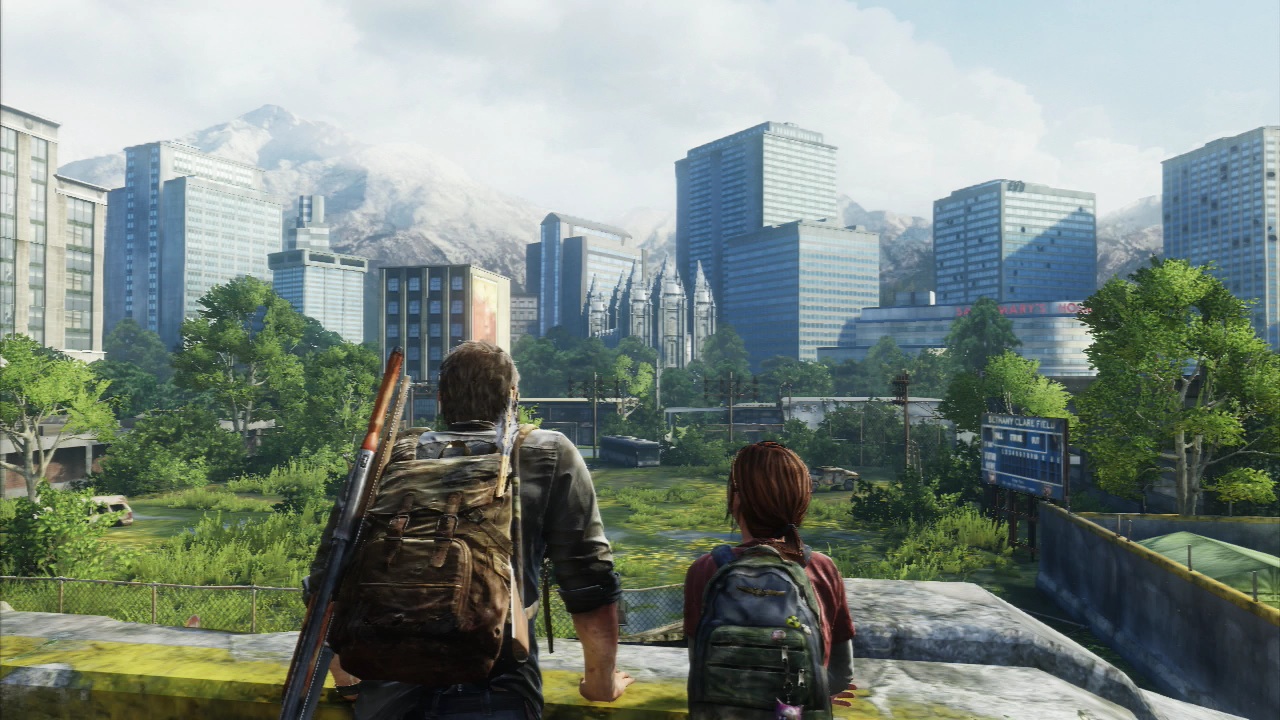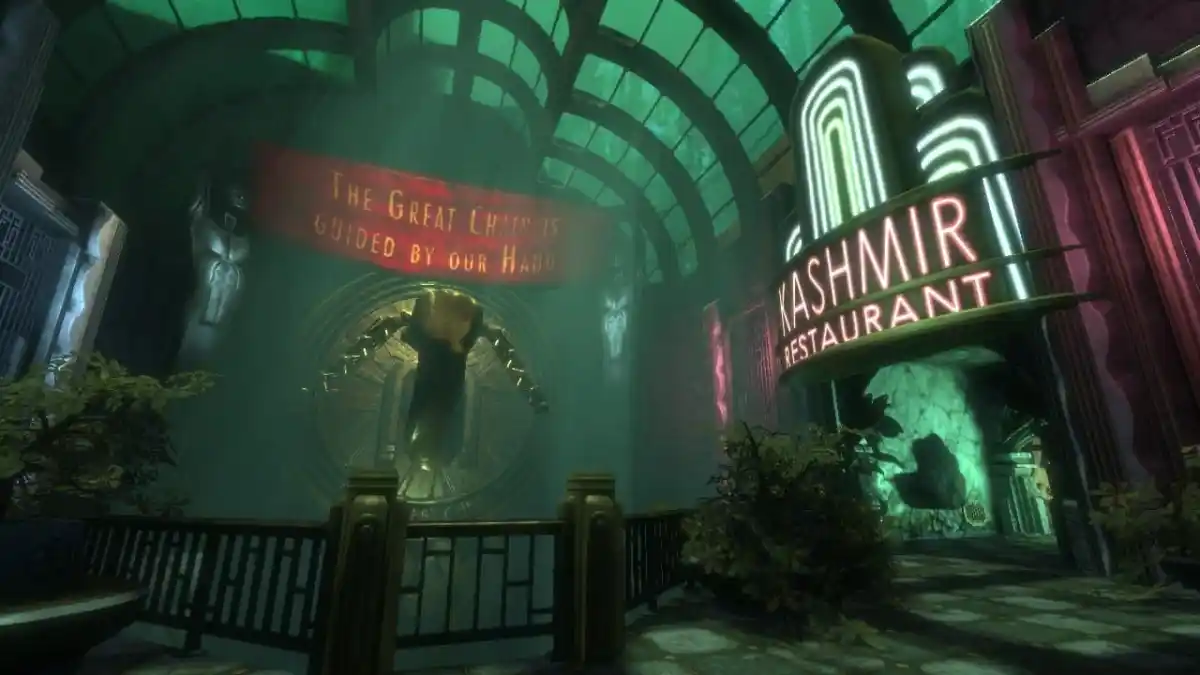Video games are inherently spatial. As we play, we move through designed environments, along preset paths or open areas that replicate towns, cities, jungles, deserts, bluffs, and countless other environments both natural and artificial. These imagined, digitally realized spaces set the parameters of the story being played in a way not dissimilar to how mise-en-scene works in cinema to provide context by populating the screen. As Associate Professor Elizabeth Goins writes, “space itself can convey meaning albeit in a supportive, rather than primary, role.”
Literary critic Frederic Jameson extends that idea to the real world. He argues in his 1988 essay “Postmodernism and Consumer Society” that narrative theory can be applied to architecture, with buildings and the way people move through them becoming “dynamic paths and narrative paradigms which we as visitors are asked to fulfill and to complete with our own bodies and movements.” Buildings can lay out patterns through which we come to understand their purpose — as a house or a museum, for example — and video game designers draw on that knowledge to create not just buildings, but entire worlds.
All set dressing is a kind of environmental storytelling. “The environment can be used to inform the player about setting, characters and conflict,” writes Dr. Teun Dubbelman. Bullet-pocked walls tell of violence past, a lavish Edwardian garden suggests wealth, overgrowth indicates decay, and choice of materials give an idea of the kind of society being portrayed. This truth has been a part of video game design from the beginning; dingy alleys, graveyards, or neon-drenched streets all captured different moods to help sell whatever flimsy fiction was being presented. However, the value placed upon space as a storytelling mechanic has enjoyed varying mileage.

For entire generations of consoles, backgrounds usually offered no great insights into the themes of the games. Of course exceptions exist, but not until BioShock in 2007 did environmental storytelling break into the mainstream as a powerful, arguably even vital, component of how games tell stories. Rapture was a watershed creation. The failed objectivist utopia was a bold vision that carried the tale of its fall within its walls. Audio logs broke the spell somewhat, but even without the specifics, you could still understand the Icarian overreach that led to self-immolation.
The walking simulator genre is deeply indebted to BioShock. The genre’s greatest achievements — the likes of Gone Home and What Remains of Edith Finch — learned the lessons of Rapture. The houses, villages, forests, and spaceships that have proliferated within the genre are lived-in spaces. Advertisements, books, household items, diary entries: These items are set dressing for the narrative paths that players follow, but they are also powerfully illuminating artifacts that shed light on all manner of incidental features, at least for anyone keen enough to spot them. However, to suggest that only walking simulators have benefited from the understated power of environmental storytelling is folly.
Use of narrative architecture as an integral part of video game storytelling exploded after BioShock. Fallout, Dishonored, The Last of Us, Enslaved: Odyssey to the West, Prey, Spec Ops: The Line, and countless other games took the incidental and made it significant. The early 2010s were a halcyon period of video games where often unexciting main storylines were bolstered by seemingly inconsequential side stories that gave weight to the fictions in which these narratives of searching, survival, and soldiering took place. Carefully designed environments made the worlds feel more real and, therefore, more relatable.

However, a second, opposing trend was rising within the industry. Long-term player engagement rather than one-off purchases was becoming the norm, and that meant finding ways to keep players in the game. Bigger worlds was one of the answers, but as the scale exploded, the sense of organization and attention to detail that left environments feeling unique and lived-in faded. Environments became worlds. An Assassin’s Creed may be able to show the division between the haves and the have-nots, but it cannot show how its cultures have shaped the beliefs of its ahistorical protagonists. Meanwhile, Mordor, Sunset City, Hope County, or New Providence may be startlingly enjoyable playgrounds, but they are not themselves particularly interesting locales to inhabit.
To revisit Jameson above, with the explosion of open worlds, the handcrafted feeling of narrative architecture has been obliterated. It occurs in just the same manner as what he calls the “latest mutation in space—postmodern hyperspace” has created a disruption in “the capacities of the individual human body to locate itself, to organize its immediate surroundings perceptually, and cognitively to map its position in a mappable external world.” When worlds exist merely to be played in, they lose their ability to convey any real sense of a world; they become bald fictions.
Environmental storytelling has lost ground over the last few years, becoming less prominent as a way of contributing to video game stories, but it is a genie that cannot be put back into its bottle. The likes of Iron Harvest, Cyberpunk 2077, System Shock 3, and a new BioShock are almost certain to continue the heritage of stories being enriched by the environments in which they take place — possibly even to the extent that the environments are more memorable than the stories. Those games, among others, will act as windvanes for the future, and the ever-present hope is that more developers will remember that a rich environment can be far more engaging than endless gameplay.






Published: Jan 27, 2020 03:27 pm